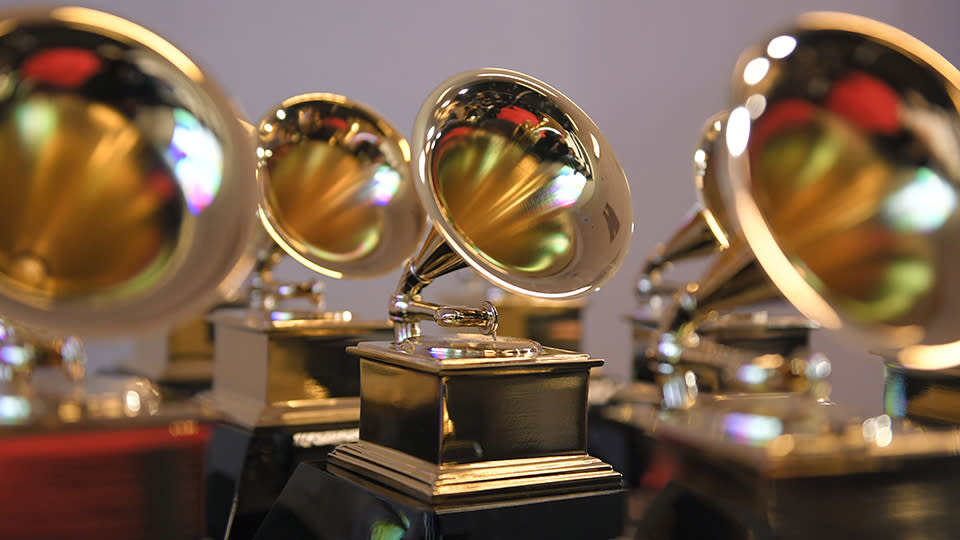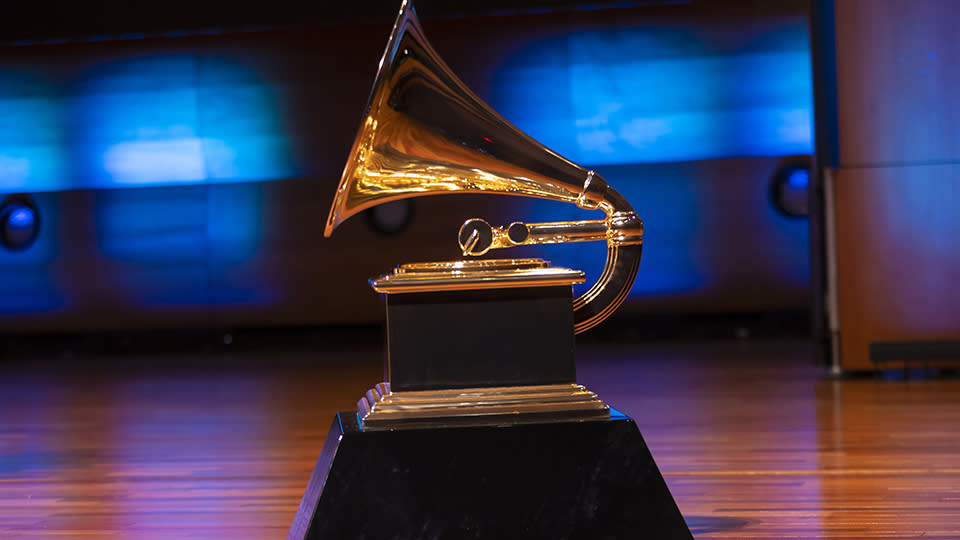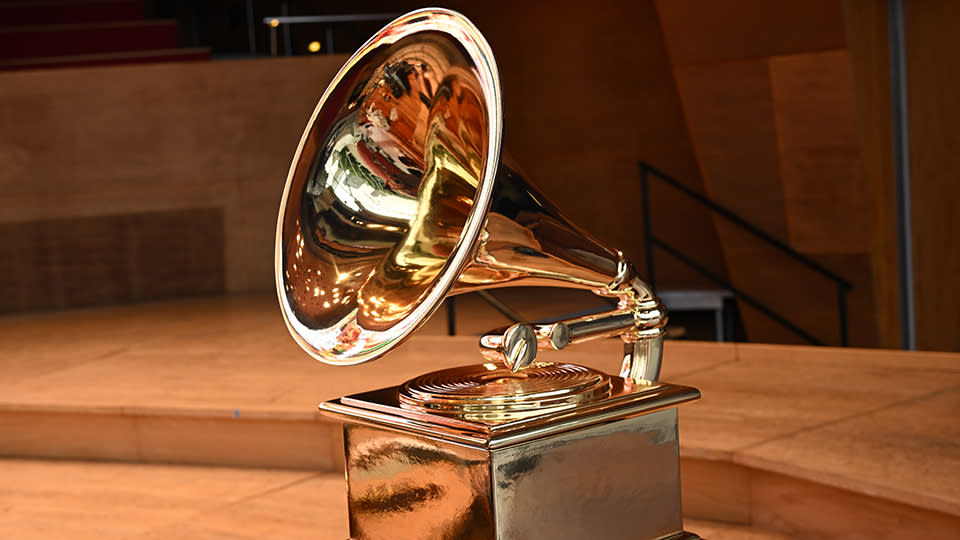Can You Vote For the Grammys? Here’s How to Support Your Favorite Artists

All products and services featured are independently chosen by editors. However, StyleCaster may receive a commission on orders placed through its retail links, and the retailer may receive certain auditable data for accounting purposes.
The Grammys are the most respected awards ceremony in the music industry, so it’s only natural for fans to want to know how to vote for the Grammys to support their favorite artists.
More from StyleCaster
The Grammy Awards—which were originally known as the Gramophone Awards (hence the gramophone-shaped trophy)—started in the 1950s as a way to honor artists and executives in the industry similar to how movies and television have the Oscars and the Emmys. The first award ceremony was held at the Beverly Hilton Hotel in Los Angeles and the Park Sheraton Hotel in New York City on May 4, 1959. However, it wasn’t until the second Grammys that the awards show was televised. (The first live telecast of the Grammys was the 13th awards show in 1971.) Since the first Grammys, hundreds of artists have been recognized by the Recording Academy. Taylor Swift, Beyoncé, Kanye West, U2, and Jay-Z are among the artists with the most awards in Grammys history.
Like most awards shows, the Grammys voting process is complicated. There are several steps to it and predictions aren’t always as easy to make as other awards shows. Unlike other music award shows, such as the Billboard Music Awards or the MTV Music Video Awards, the Grammys aren’t voted on by the public. Instead, the awards are decided by voters from the Recording Academy. Ahead, find out how Grammy winners are decided and how to support your favorite artists, even if you can’t vote for them.

Screening
According to the official Grammys website, the first step in the nominations process is to screen submissions. Before nominations are decided by Recording Academy members, there are around 350 experts across various genres who determine whether a submission is eligible and placed in the correct field. What does this mean? Well, these experts make sure that a country song that’s submitted for a country category is actually country and that a “Best New Artist” is indeed a new artist. (There are a lot more politics for that category that we won’t go into now. But you can read about them here.)
“The purpose of screenings is not to make artistic or technical judgments about the recordings, but rather to make sure that each entry is eligible and placed in its proper category,” the Grammys website states.
Nominations
Once Grammys submissions are screened, it’s time to nominate. Per the official Grammys website, the Recording Academy sends ballots voting members, who are instructed to vote only in their areas of expertise. So, essentially, a folk singer who’s in the Recording Academy is told to only vote in the folk categories. How the Recording Academy enforces this, the Grammys website doesn’t say. While Grammy voters can only vote for up to 15 categories in the genre fields of their specialty, all voters are able to vote in the Main Four categories: Record of the Year, Album of the Year, Song of the Year, and Best New Artist.)
After nomination voting is completed, the ballots are counted by the independent accounting firm, Deloitte. The Grammys website also states that there are a few specialized categories that are determined by a national nomination review committee comprised of members across the country.
Final voting
After nominations are determined, final ballots are sent to voting members who may vote in up to 15 genre categories, as well as the Main Four: Record of the Year, Album of the Year, Song of the Year, and Best New Artist. Again, voters are instructed to vote only in areas of their expertise. After that, the votes are counted by Deloitte before the results are announced at the annual Grammy Awards show, where winners are revealed for the first time. The Grammys website states that the results are sealed in Deloitte-sealed envelopes and not known until they’re announced.

Who’s in the Recording Academy?
All of this may lead you to wonder who the F is in the Recording Academy that determines Grammy winners and submissions. According to Billboard, the Recording Academy consists of more than 21,000 musicians, producers, recording engineers and other professionals in the music industry, but only about 12,000 members of those are allowed to vote. A Recording Academy member can become a voter with the endorsement of at least two Recording Academy voters. Voters must also be in good standing with their dues, which is $100 a month.
As for who can become a Recording Academy member, the official Grammys website states: “Recording Academy Voting Members are professionals with creative or technical credits on at least six commercially released tracks (or their equivalent). These may include vocalists, conductors, songwriters, composers, engineers, producers, instrumentalists, arrangers, art directors, album notes writers, narrators, and music video artists and technicians.”
In terms of demographics, the Recording Academy is embarrassingly skewed. Slate reported in 2018 that women only made up 21 percent of the Recording Academy, while people of color was only 28 percent. This may explain why there are only two women (Allison Krauss and Beyoncé) who are in the top 14 most decorated Grammy winners in history. It also explained why only one woman (Alessia Cara) took home a Grammy on the televised broadcast in 2018. To combat this, the Grammys invited 900 new members in 2018, specifically women, people of color and people under the age of 39.
While the Grammys aren’t voted on by the public, fans can still support their favorite artists by posting about them on social media to put them on the Recording Academy’s radar. Fans can also vote in Grammys polls created by music industry magazines like Billboard, which is often read by members of the Recording Academy, to also show their support. And then there are Grammys campaigns. Artists are known to spend tens of thousands of dollars each year on their Grammys campaigns, which include billboards and promotional packages for members of the Recording Academy. Though it isn’t common for fans to come together to pay for their own Grammys campaigns, there are reports about fandoms who have mobilized themselves in the same way to get their favorite artists to achieve feats such as a number one on the Billboard Hot 100.

In an interview with Billboard in 2017, Recording Academy President/CEO Neil Portnow talked about diversifying the Recording Academy membership and who votes for the Grammys. “We have taken a concerted effort to making sure that the voting membership of the Academy is representative of the creative community,” Portnow said at the time. “We’ve got 84 categories. Are we well-represented with membership from all of them? Are we engaging them? Are they participating? We look at that regularly and to the extent that we find there are areas that need more attention, we’ll do that.”
He also called 2018’s multicultural and genre-diverse nominations a “reflection of the times” for the music industry. “It’s a reflection of the times, something we’re very proud of,” he said. “I would say that we have to be careful in the sense that [the nominations] didn’t happen solely because of its enormous popularity and acceptance. That’s undeniable, but through the lens of our folks who listen to that record as a musician or a producer and listen to all those elements that got fused together and the production elements, the instrumentation and the diversity there, from a craft standpoint, it’s an extraordinary record.”
The 66th Grammys air on Sunday, February 4 2024, at 8 p.m. ET / 5 p.m. PT on CBS. Here’s how else to watch them for free.

Best of StyleCaster

